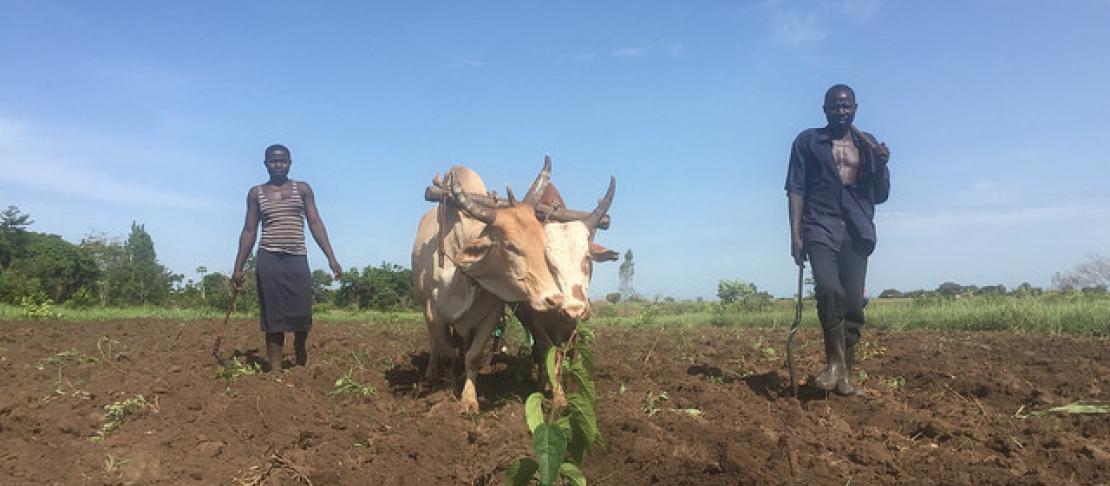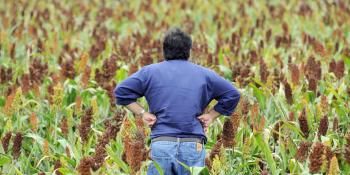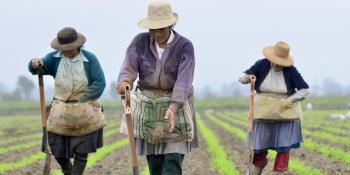Building climate change resilience in mixed livestock-crop systems

A recently published book chapter examines the current literature on mixed livestock-crop systems and offers conclusions for future research and policy.
Climate-smart agriculture (CSA) is an approach towards sustainable development and food security in the wake of climate change. The main objectives of CSA include increased agricultural productivity, climate change adaptation, and the reduction of greenhouse gas (GHG) emissions. One area that has received increased attention in regards to CSA is mixed crop-livestock systems, or farms that include both crops and livestock, which are featured prominently in developing countries. The ubiquity of such systems makes them an ideal setting for incorporating CSA practices. Despite this, there remains a limited understanding of the costs, benefits, and trade-offs of climate-smart options within mixed systems.
A chapter on mixed livestock-crop systems, featured in a recently published, open-access book, Climate Smart Agriculture: Building Resilience to Climate Change, examines the “climate smartness” of various practices associated with mixed livestock-crop systems. Researchers from the CGIAR Research Program on Climate Change, Agriculture and Food Security (CCAFS) contributed to the publication in an effort to advance CSA knowledge and goals. The chapter does so through a systematic review of the published literature coupled with expert surveys. The summary points to the benefits, drawbacks, and potential of CSA within mixed systems.
For instance, well-integrated systems tend to be more productive and efficient. The adoption of new and improved crop varieties, including higher yielding and drought- and pest-resistant crops, have improved both crop productivity and food security in developing countries. Livestock options, including cross-breeding and the adoption of new livestock species, can result in more productive animals and reduced methane output.
Crop management techniques, including the timing of when crops are planted and intercropping of complementary species, offer risk mitigation as weather patterns become more unpredictable. Water efficiency is especially important for mixed livestock-crop systems. Benefits of efficient water use include an extended growing season, reduced vulnerability in times of drought, and diminished labor burdens on women and girls, who are often tasked with gathering water.
Another climate-smart option includes the use of crop residues, or the materials left over after a crop has been harvested. The maintenance of crop residues includes mulching, cover cropping, and reduced tillage. The benefits of these practices include reduced soil erosion, water retention, and healthier soils, all of which contribute to the sustainability of mixed livestock-crop systems. The management of nutrient cycles and soils can reduce GHG emissions while improving productivity. Manure management is another sustainable use of livestock byproducts and can reduce costs associated with agriculture inputs.
The drawbacks to climate-smart options within mixed systems are also noted in the new chapter. The benefits to climate-smart practices are not always apparent to farmers, limiting the likelihood of adoption. Cost is a major barrier as well, especially for soil, manure, and grazing management. The initial investment required for cross-breeding or adopting new types of livestock is also considerable. If farmers do make the switch to cross-bred livestock, the need for more water and higher quality feed place significant burdens on smallholder farmers. Larger animals can also be difficult to handle and are more vulnerable to droughts. While the adoption of new crop varieties may not require the same level of initial investment as livestock, the transition is often slow and constrained by the availability of seeds.
Technology access and “technical know-how” can also constrain the adoption of climate-smart techniques. For instance, limited access to weather information can lead farmers to plant too early or late within a season. Increased labor demands for some techniques, such as intercropping, place additional burdens on smallholders, especially women. Finally, information access and cultural acceptability can hinder the adoption of climate-smart options within mixed livestock-crop systems.
After reviewing the benefits and drawbacks of various climate-smart options within mixed livestock-crop systems, the authors of this chapter draw several conclusions. To begin, context matters. Local conditions play a large role in determining whether or not farmers adopt CSA practices. While modeling can be used to better understand the economic and biophysical conditions that play a role in farmer decision making, they cannot always take into account the decisions farmers often make between short term food and livelihood needs, and long term resiliency strategies. Field work will continue to be an essential component of understanding on-the-ground conditions that contribute to adoption decisions. Finally, the authors note areas of promise for the widespread of adoption of climate-smart options. Policy, especially within an innovative and capacity enhanced context, and information and communication technologies, which fosters information sharing, networks, and data collection, can contribute to CSA adoption within mixed systems.
Read more:
Kathlee Freeman is a communications consultant with CCAFS.



